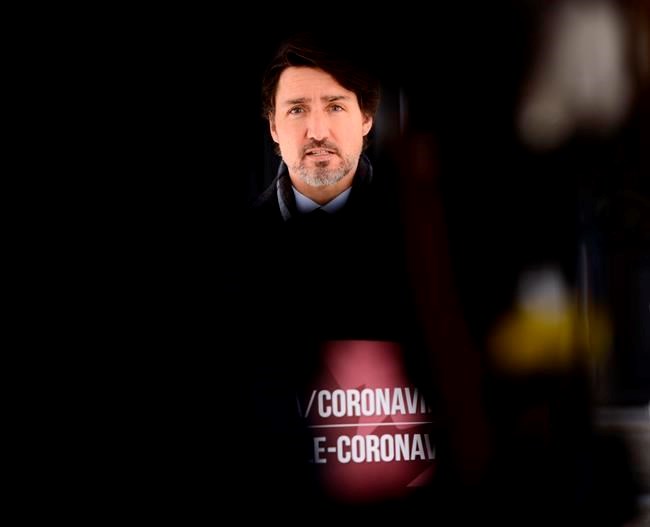OTTAWA — Prime Minister Justin Trudeau promised the Canadian Armed Forces will respond to provincial requests for assistance at long-term care facilities hit by COVID-19, but said Thursday the measure is a short-term solution and Canada should not need to have "soldiers taking care of seniors."
Here's what you need to know about the military's support in response to COVID-19:
What requests have been made so far?
The federal government has so far received eight pandemic-related requests for assistance from the provinces that have translated into military action. Three have involved mobilizing Canadian Ranger patrols to help local communities in northern Quebec and one in northern Saskatchewan. The military also used one of its planes to transport a ventilator to Nova Scotia.
Three other requests have dealt specifically with long-term care facilities, including two calls for help from Quebec and one from Ontario.
What support has been offered to long-term care facilities?
The Canadian Armed Forces deployed 130 personnel last week after Quebec asked for assistance at five long-term care facilities battered by COVID-19 in and around Montreal. More than half are medical personnel divided into five teams comprised of two nurses and 12 medical technicians, while the remainder are support personnel. The teams are working alongside health-care staff within the facilities.
The two other requests for assistance at long-term care homes were received from Quebec and Ontario on Wednesday. Military planners are now assessing what type of support those provinces need and what can be provided.
Quebec Premier Francois Legault has publicly asked for 1,000 military personnel while Ontario has suggested it would like five teams of about 50 service members each that include both medical personnel to work alongside staff at five long-term care facilities as well non-medical personnel for general tasks.
What kinds of medical resources does the military have?
The Canadian Armed Forces is mandated by law to provide medical and dental services to its full-time troops at home and while deployed abroad. To meet that requirement, roughly 2,600 of the military's 68,000 regular-force members are medical professionals. Of those, around 460 are doctors and nurses. The rest are medical technicians, pharmacists, dentists and dental hygienists.
The military's medical professionals are scattered across different bases and facilities across the country. They have regularly been called upon to assist with emergencies at home and abroad, with 79 deployed to Sierra Leone in 2014-15 to help the African nation deal with an Ebola outbreak. They were also tasked with helping repatriate Canadians in the early days of the COVID-19 crisis.
How will military personnel work in long-term care facilities?
The Armed Forces' members are intended to reinforce those already working in such facilities, not replace them. They will work shifts during the day and night to provide medical care and handle other tasks depending on their respective roles and qualifications, based on the needs of the centres where they are deployed.
The military members will arrive at the care facilities in their uniforms but change into and wear hospital scrubs provided by the homes while working. They will then change back into their uniforms when they are finished working and leave the scrubs for the facilities to clean.
While wearing scrubs will ensure proper hygiene within the care facilities, Defence Department spokesman Daniel Le Bouthillier says they will also help service members blend in with the facilities' existing staff "without causing confusion or additional stress to vulnerable patients."
How long can the military provide such support?
While the government has said it will respond to the requests for assistance at long-term care facilities, some defence officials and experts have noted the military does not have a glut of medical personnel — and those it does have are primarily focused on caring for other troops.
"The capabilities we have in the Canadian Forces are designed for the Canadian Forces, they are not designed for providing significant augmentation to the medical services of the country," retired lieutenant-general Guy Thibault, who served as the military's second-in-command and is now chair of the Conference of Defence Associations Institute, said during a recent interview.
"When we supported the Ebola crisis in Africa a couple of years ago ... that was really placing a major strain on our Canadian Forces' capabilities. So it's a specialized capability we have, but it's not designed necessarily for the front line."
This report by The Canadian Press was first published April 23, 2020.
Lee Berthiaume, The Canadian Press



